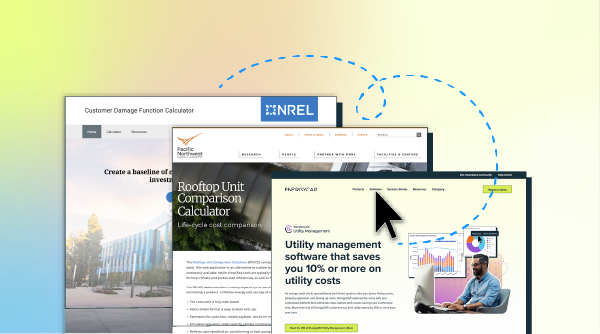5 Ways to save energy in your grocery stores this holiday season
1. Draft a holiday energy playbook and align your team
Take time now, before the holiday rush begins, to assemble a holiday energy huddle. Bring key players like store operations, facilities, finance, and energy management together to document a short, simple playbook that covers:
- HVAC and refrigeration setpoints and schedules for extended hours to adjust for holiday shopping patterns
- Temporary loads to manage like holiday lights and displays, food-tasting stations, and additional lighting that you need to manage
- Roles and communication that determine who checks, overrides, and resets schedules post-holiday
- Expected weather, which may dictate how your store needs to plan for heat, cold, humidity, or snow and ice
Train store teams on what’s changing, why it matters, and how to reset after the rush. Organizations that treat this as an annual, iterative play improve results year over year.
2. If you can’t turn equipment off, set it back
And if you can’t set it back, tune it up! Use these simple triage steps everywhere to reduce energy waste across your grocery store portfolio:
- Turn it off if it’s not needed: Decor lighting and unoccupied back-of-house zones should not be on during off-hours
- Set it back if you can’t turn it off: Tighten temperature bands by a degree or two during overnight stocking or low-traffic windows
- Tune it up if it must run 24/7: Verify short cycling, defrost schedules, and fan operation so equipment runs efficiently and avoids failure
This mindset keeps your team laser-focused on the most significant wins without compromising product integrity.
3. Hunt down “silent wasters” and eliminate energy waste
The fast holiday pace invites small mistakes that can become big bills. Build a quick holiday exception review process to spot and fix these issues before they cascade across your stores. Here are a few silent wasters to consider in your hunt:
- Rogue overrides: HVAC units are often left in manual mode with no setbacks, and constant, maximum energy use. Reduce high energy usage by requiring same-day rollback checks and weekly reports.
- Peak demand hits: With HVAC, lights, and caseloads stacked, your demand peak can land at the most expensive hour. Stagger start-ups, pre-cool and pre-heat where feasible, and avoid large coincident loads during your utility’s peak window.
- RTU neglect: Distributed rooftop units are easy to ignore. Prioritize work on the worst actors and confirm economizers and sensors are working correctly.
4. Put interval data to work and discover abnormal issues
If you have access to interval (15-minute) meter data, it’s your best friend in November and December. Use near real-time data to:
- Confirm schedule compliance: See if loads shut down on time after close, or if your Sunday holiday schedule applies correctly
- Catch abnormal behavior quickly: Use a baseline to compare against actual usage. Look for unexplained spikes that signal overrides or failing equipment
- Manage demand: Identify your facility’s peak window and shift flexible loads out of it when possible
Your post-holiday plan: lock in long-term savings
When the rush winds down, use January to set up structures that compound savings, starting with these three methods:
Centralize and standardize your utility data
Invest in energy management software that meets your needs. Pulling everything into a single, audited platform like EnergyCAP Utility Management sets you up for predictable utility costs next year, even as prices rise significantly around the country. Centralization is one of the key reasons that EnergyFCAP stands tall as a top energy management company.
Add measurement and verification (M&V) to your routine
When you make energy-saving changes, do you know what the impact is? M&V puts reliable calculations behind your efforts by adjusting baselines for weather, billing period length, and occupancy to calculate actual savings and ROI on upgrades. This approach is how you justify next year’s CapEx with confidence.
Close the accounting loop with workflow automation
It might seem like store operations and energy managers are battling the winter surge alone, but holiday volume strains accounts payable, too. That’s precisely when data quality and workflow automation save you real dollars. Accelerate month-end with accurate accruals, chargebacks, exports, and forecasting, so late fees disappear, and your finance team can spend their time where it really matters.
Save for the holidays and tomorrow with EnergyCAP
Holiday traffic doesn’t have to blow your grocer energy budget. Take steps now to tighten schedules, ensure equipment is running efficiently, and add energy management to your holiday routines. Watch the full webinar with Tom Diliberti for practical grocery store energy management tactics you can deploy this season.
When you’re ready to take control of your grocery store’s energy management, drive utility bill savings, and have analytics to prove its effectiveness, request an EnergyCAP demo.



![Top 12 sustainability reporting platforms (ESG) [2026]](https://www.energycap.com/wp-content/uploads/2025/11/blog_thumb_top-sustainability-platforms.webp)